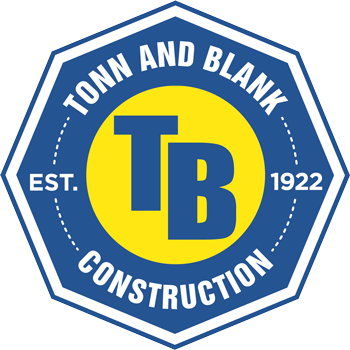Feasibility Studies for Construction Projects: An Introduction
Launching a construction project is like embarking on a grand adventure. It takes you on a thrilling journey to transform visions into reality, shape skylines, and create beautiful yet functional spaces. As with all conquests, preparation is key. Conducting a feasibility study before diving headfirst into the construction frenzy sets the stage for success.
What is a Feasibility Study?
Think of a feasibility study as a compass to guide you through the unending maze of construction uncertainties. It’s a detailed analysis that helps to determine if your proposed project is technically and financially viable. Feasibility studies examine your project’s financial, technical, legal, and operational aspects.
A feasibility study’s findings provide valuable insights into the project’s viability. They offer a holistic overview of potential advantages, shortcomings, and constraints that could affect the project’s outcome. Besides assessing viability, conducting a feasibility study helps determine if the project is beneficial from a financial, technical, legal, and market standpoint.
Components of a Feasibility Study
Feasibility studies are holistic documents with numerous components to help you address every aspect of your construction project. Key components include:
- Project description: This section provides an overview of your proposed project. It covers the project’s scope, objectives, and expected outcomes.
- Technical feasibility: It examines your project’s physical and engineering requirements to determine its viability from a technical standpoint. Crucial considerations include access to utilities, site location, environmental impact, and regulatory compliance.
- Financial feasibility: It examines your project’s financial viability to determine profitability and estimate return on investment. It entails estimating the cost of construction, operation, and maintenance, and projecting the project’s potential revenue stream.
- Market analysis: Market analysis delves into supply and demand dynamics surrounding your construction project. It entails assessing the market trends, target audience, competitors, and potential market share. Market analysis helps determine if the project is commercially viable by ascertaining if the market needs the project.
- Legal and regulatory requirements: It entails analyzing the legal and regulatory considerations affecting your project. This component excels at identifying licenses, permits, zoning regulations, and other legal obligations you’ll need to fulfill before moving forward with the project.
- Risk assessment: The risk assessment component helps evaluate your project’s potential risks and uncertainties. It helps identify and analyze risks relating to construction delays, market fluctuations, cost overruns, and legal issues. It enables you to develop effective contingency plans and risk mitigation plans.
- Environmental impact assessment: It helps assess the potential consequences of your project on the environment. The process considers crucial factors such as habitat disruption, air and water pollution, waste management, and resource consumption. The assessment ensures your project complies with environmental laws and sustainability goals.
How to Conduct Feasibility Studies for Construction Projects
You’ll need a methodical and systematic approach when conducting a feasibility study to evaluate if a construction project is viable. Here’s a step-by-step guide on how to conduct feasibility studies for construction projects.
- Define the scope: Clearly define your proposed project’s scope, goals, and objectives. Drill down to the key deliverables and outcomes the study will assess.
- Collect the relevant information: Keep all the necessary data and information handy. Crucial information includes market data, technical specifications, legal requirements, financial records, and environmental regulations.
- Identify critical stakeholders: Determine the crucial stakeholders involved in your project and understand their perspectives, concerns, and expectations. They include project developers, investors, regulatory bodies, and potential end-users.
- Conduct a technical assessment: Engage architects, engineers, and other professionals to evaluate your project’s technical feasibility. They’ll analyze factors such as access to utilities, site location, and compliance with building codes and regulations.
- Perform a market analysis: Assess the project’s market demand, potential market share, and competition to determine the project’s financial viability. A market analysis entails analyzing market trends, population demographics, and projected growth.
- Assess financial viability: Financial assessment helps estimate the project’s cost and potential revenue stream. Evaluate the operational expenses, maintenance costs, potential revenue streams, and projected income. A financial analysis helps determine profitability, payback period, and ROI.
- Consider legal and regulatory requirements: Identify and analyze your project’s regulatory requirements and ensure it complies with all the applicable laws and regulations.
- Conduct an environmental impact assessment: Understanding the project’s environmental impact can help you incorporate sustainable practices to mitigate the damage.
- Evaluate risks and strategies: Consider all risk factors that could derail your project progress and create effective risk mitigation strategies.
- Compile and analyze your findings: Consolidate your findings into a comprehensive feasibility study report. Present the results and include a SWOT analysis. Recommend whether to proceed with the project alongside any adjustments and modifications.
- Review and update: Review and update the feasibility study as the project’s circumstances change or uncover new information.
Unlike plans and schematics, a feasibility study is a dynamic document. It provides valuable insights and guidance to help you make informed decisions when launching a new construction project. It helps you hit the ground running and evolve with the project.
Search the Site
Recent Posts
- Tonn and Blank Honored with Excellence in Safety Award from CCS May 5, 2025
- Next Generation of Builders Takes Shape at Tippecanoe Trades Expo April 26, 2025
- Accelerating Retail Innovation: Partnership with Family Express April 16, 2025
- Factors to Consider for Industrial Construction Projects April 10, 2025
- Project of the Year – Indiana Subcontractors Association March 24, 2025
Posts By Category
- Company News (22)
- Project News (36)
- Resources (14)
